#Jeollabuk-do
Explore tagged Tumblr posts
Photo
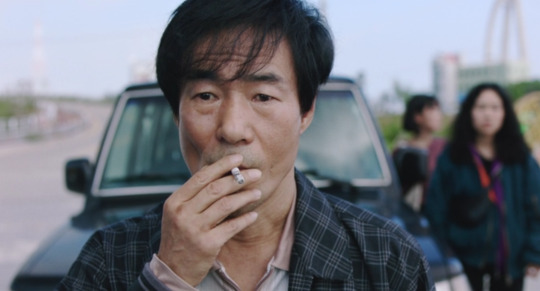
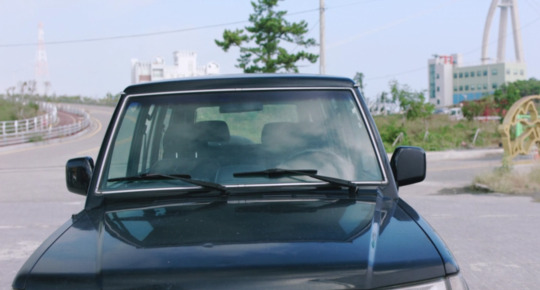
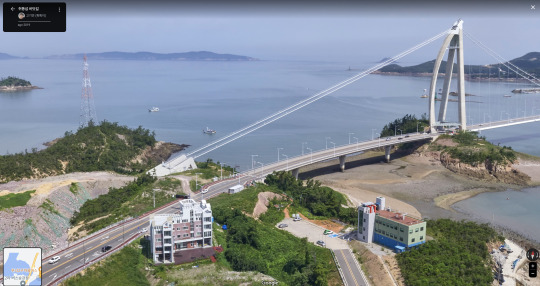
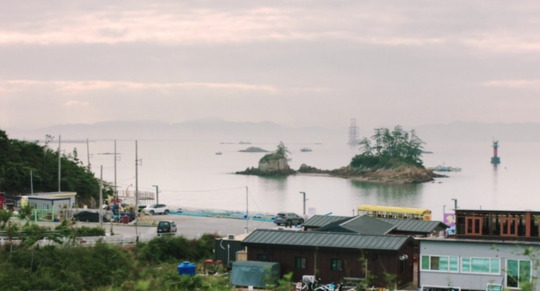
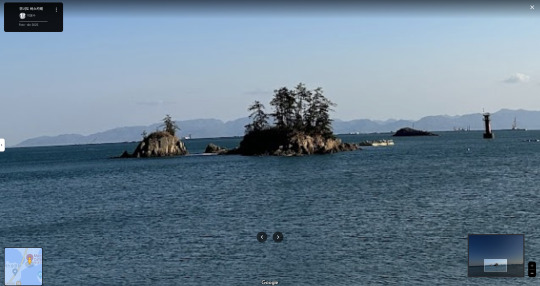
Retour à Séoul / Return to Seoul Davy Chou. 2022
Village 산10 Munyeodo-ri, Okdo-myeon, Gunsan-si, Jeollabuk-do, South Korea See in map
See in imdb
#davy chou#return to seoul#retour à séoul#village#park ji-min#oh kwang-rok#kim sun-young#gunsan#jeollabuk-do#okdo-myeon#movie#cinema#seaside#film#location#google maps#street view#2022
21 notes
·
View notes
Text

byeonsan-myeon, buan-gun, jeollabuk-do, south korea
by 나상인
3 notes
·
View notes
Text

eom jisung, remember the name.
#eom jisung#gwangju fc#football#k league#the kid is crazy good for ppl who don’t follow kr football he’s compared with sonny basically#he’s a tricky lw who can shoot with either foot but he relies more on dribbling than pace#he def needs to add some muscle tho and his injury history is a little concerning (he’s had a couple of ankle injuries)#but with some development he could definitely start for a k league 1 team and the knt#possibly even move to a european club and do well there i’d like for him to go to the buli first before any other tho#but yeah first development in kleague then possible move to a lower buli club that would be the dream#he doesn’t have military exemption tho 🥲#funnily enough he’s from jeollabuk-do iirc he’s probably a jeonbuk fan LOL#i think he came to the FA cup final against fc seoul#also he’s named after park jisung 😭😭😭 his parents really said project mbappé#rahul.txt
5 notes
·
View notes
Text
The History of Korean Female Soloists from the 20th Century: Episode 1/?
The inaugural episode of 'The History of Korean Female Soloists from the 20th Century' is now underway, focusing on renowned Korean artists who gained prominence during the early 20th century amid Japanese occupation.
The available information on these artists varies significantly, as they were active nearly a century ago, prior to the Korean War, which contributed to the loss or scarcity of historical records.
Kim So Hee (김소희;金素姬)
In Part 4 of 'The History of Korean Male Groups,' I made a brief reference to Kim So-hee, who was associated with the Gyeongseong Broadcasting Station (JODK) (경성방송국). Since I have previously discussed this broadcasting station, I will not elaborate extensively but will provide a concise overview here.
Kim So-hee (김소희; 金素姬), originally named Kim Soon-ok (김순옥; 金順玉), was born on December 1, 1917, in Gochang-gun, Jeollabuk-do, during the era of Japanese colonial rule. She gained immense recognition as a distinguished pansori vocalist, earning the title of national singer and being designated as a national intangible cultural asset. Under her pen name, Man-jeong (만정; 晩汀), she was actively involved in the Joseon Vocal Music Research Association and the Hwarang Changgeuk Troupe, ultimately achieving legendary status as a significant cultural figure of her time.

At the age of twelve, she began her vocal training with the renowned singer Song Man-gap (宋萬甲), accompanied by her father, Kim Bong-ho (김봉호) and also learned traditional songs and sijo (時調) from Jeon Gye-mun (全桂文). Following her graduation from Heungdeok Public Elementary School, she developed a deep appreciation for "Chuwolmanjeong" (秋月滿庭) by Lee Hwa-jung-seon (李花中仙) during her time at Jeonnam Girls' High School while staying with her older sister in Gwangju, which led her to enroll in Song Man-gap's school in 1929. In the late 1920s, while serving as a boy gisaeng (童妓) within the Joseon Gwonbeon (朝鮮券番), she acquired knowledge of female vocal styles and lyrics, ultimately gaining recognition as a prominent girl singer. Her performances were featured on the Gyeongseong Broadcasting Station (경성방송국; 京城放送局), and she recorded her work for an album.
In the 1930s, she acquired knowledge of the initial segment of the five Madang of pansori and engaged in recording and broadcasting activities. Her tenure at the Gyeongseong Broadcasting Station spanned from 1927 to 1942, during which she performed a variety of pieces, including "Gangsanpungwol" (江山風月),"Gyerak" (界樂), and numerous folk songs such as "Yukjabaeki" and "Chunhyangga." Kim So-hee made her debut on the station on December 29, 1931, where she showcased the nundae sections of "Sugungga," "Simcheongga," "Jeokbyeokga," and "Chunhyangga." Each broadcast featured her renditions of short songs like "Gangsangpungwol," "Geongonga" (乾坤歌), and "Jangbuga" (丈夫歌). Throughout the Japanese colonial era, she recorded a total of 54 albums with various record labels, including four with Columbia, thirty with Orkeh, and twenty with Vikta.


English - After recording the Pansori Chunhyangga album (Victor Records, Seoul) in 1935. From left, Han Seong-jun, Im Bang-ul, Lee Hwa-jung, Jeong Jeong-ryeol, Park Nok-ju, and Kim So-hee (18 years old). Korean - 1935년 판소리 춘향가 음반 (빅터 레코드, 서울) 을 취입한 후의 모습. 왼쪽부터 한성준, 임방울, 이화중선, 정정렬, 박녹주, 김소희(18세).
Life and Career
Kim So-hee's entry into the art world began after her graduation from Gwangju Girls’ High School, now known as Jeonnam Girls’ High School (全南女子高等學校). At the age of 13, she was deeply moved by a performance of 'Lee Hwa-jung and Her Party' at a tent theatre. A connection through her maternal grandmother's adopted daughter's husband, who was affiliated with the police, led her mother to meet Mr. Song Man-gap. During this meeting, she performed a line from 'Simcheongga,' and later, in her 50s and 60s, she recorded a complete rendition of 'Simcheongga,' titled 'Chuwolmanjeong (秋月晩汀),' which highlighted her artistic prowess. Upon hearing the emotionally charged melody that began with ‘Chuewol is full of emotion, reflected on the coral curtain, and the geese in the clear sky fly high under the moon, tturu…’, Master Song Man-gap was so moved that he knelt in admiration.
She decided to leave school to focus on her singing career under the guidance of Song Man-gap. Within just six months of training, she made her stage debut as ‘Lee Doryeong’ at a disciple recital and subsequently performed in 'Lee Hwa-jung and her party' across various locations, including Busan and Mokpo. Additionally, she studied seungmu and geommu with Jeong Seong-rin in Jeonju, learned lyrics and songs from Jeon Gye-mun, and trained in yanggeum with Yu Sun-seok in Jeongeup, astonishing her teacher by mastering the intricate details of ‘Yeongsanhoesang’ in merely ten days.

A photo of the famous singer Kim So-hee while she was still alive. She was praised as a 'sound sent from heaven'.
At the age of 14, she entered the inaugural Pansori Master Singer Competition in Namwon, securing first place among approximately 80 participants and earning the title of 'baby master singer.' The silver spoons awarded to her as a prize are now preserved by her daughter, Professor Park Yun-cho.
In the winter of 1931, Kim So-hee moved to Seoul to pursue her singing studies more seriously, residing at her aunt's home in Gwancheol-dong. There, she took an examination with the renowned master Han Seong-jun, who was introduced to her by Song Man-gap. During this period, she learned "Chunhyangga" from Jeong Jeong-ryeol while also making television appearances, performing, and recording.
Around this time, she adopted the stage name Kim So-hee, having been born Kim Ok-hee. She began her pansori training at 15 under Song Man-gap, concentrating on "Simcheongga" and "Heungboga." By the age of 18, her repertoire had grown to include "Chunhyangga" and "Sugungga," which she studied under Jeong Jeong-ryeol. At 22, she advanced her education with Park Dong-sil at Jishilchodang in Nammyeon, with support from Park Seok-gi. Throughout her thirties, Kim So-hee continued to enhance her vocal abilities with esteemed instructors such as Jeong Eung-min, Jeong Gwon-jin, Park Rok-ju, Kim Yeo-ran, and Park Bong-sul
At the age of 16, she expanded her musical education by studying songs and sijo under Jeon Gye-mun (1872-1940) and learned to play the geomungo and yanggeum from Kim Yong-geon. By 17, she had begun her dance training with Jeong Gyeong-rin and subsequently pursued studies in calligraphy and Chinese classics. Notable figures such as An Hyang-ryeon (1944-1981), Han Nong-seon (1934-2002), and several others became her disciples.
Shortly after starting her vocal training with Song Man-gap, she was introduced to Lee Hwa-jung-seon (李花中仙) (1899-1943), who recognized her talent and featured her in a performance at Gwangju Theater that same evening. This pivotal moment led to her joining Lee Hwa-jung-seon's Hyupryulsa, and she achieved first place in the Namwon Master Singer Competition the following year. By 18, she recorded "Simcheongga" and "Jeokbyeokga" for Oke Records and Columbia Records, establishing herself as a prominent young singer, and at 20, she collaborated with other notable artists to record the complete collection of Chunhyangjeon for Big Records.

Kim So-hee (김소희) Published by Lee Jeong-gyu. ‘Korean National Treasure-level National Singers, Master Singers, Master Drums, and Master Geum Photographs and Poetry Collection’. Suncheon Photo Printing Company.
In February 1936, the establishment of Changgeukjwa as a branch of the Joseon Vocal Music Research Association marked a significant development in her career, as she engaged in changgeuk activities alongside Kang Tae-hong, Kim Se-jun, and Kim Yeon-su. She participated in the opera Bae Bi-jang-jeon (裵裨將傳), performed by the Joseon Vocal Music Research Society from February 9-11, 1936, and took part in a flood relief music competition on August 28-29, 1936. Additionally, she showcased her talents in a renowned singer competition at the Gwangju Theatre on October 16-17, 1938, further solidifying her status in the musical landscape of the time.
On June 11, 1937, she participated in the complete recording of Chunhyang-jeon by the Viktor Gramophone Company, alongside several significant pansori pieces, including the brief song "Gangsangpungwol," which featured janggu accompaniment by Han Seong-jun and was later recorded on Columbia Records in Japan. Collaborations with Kim Deok-jin (haegeum), Sim Sang-geon (gayageum), and Jeong Hae-si (tungso) resulted in numerous songs, including "Godangsang" (高堂上), which were released on Japanese Victa records. Additional recordings, such as "Gisaengjeomgo" (妓生點考), were made with Obi-chui, Shin Sook, and Lee Hwa-jung-seon for Oke records, while "Orijeongibyeol" (五里亭離別) from Chunhyangjeon appeared on the Gunsohaehoe record. She was appointed as a director during the 5th regular general meeting of the Joseon Vocal Music Research Association on May 23, 1938.
On December 24, 1940, she performed at the inaugural show of the Hwarang Changgeuk Troupe, founded by Park Seok-gi at the Jeil Theater, alongside Cho Sang-seon, Han Ju-hwan, and Kim Yeo-ran in productions of Chunhyangjeon, the historical drama "The Bell Sound of Bongdeoksa Temple," and Kim Won-hak's original Changgeuk "Paldamchunmong." Following Korea's liberation in early 1948, she appeared with Seong Won-mok, Gong Gi-nam, and Kim Deuk-su in the performance of "Goguryeo's Hon (魂)," staged by Park Dong-sil, the head of the Gukgeuk Association established in early 1948.

English - Ensemble of Seong Geum-ryeon (gayageum), Ji Yeong-hee (haegeum), Kim So-hee (yanggeum), and Kim Yun-deok (geomungo) Korean - 성금련(가야금)·지영희(해금)·김소희(양금)·김윤덕(거문고)의 합주
The Korean Traditional Music Women's Association was founded on September 1, 1948, with significant contributions from President Park Nok-ju, Vice-Presidents Kim Yeon-su and Im Yu-aeng, General Affairs Manager Jo Yu-saek, and members including Park Gwi-hee, Han Yeong-sook, and Kim Nong-ju. Their first performance showcased the original Changgeuk "Okjunghwa" (獄中花) at Sigonggwan in October of the same year, followed by "Sunshine and Moonshine," composed by Kim A-bu, which premiered in February 1949. During the Korean War in 1950, she performed "Gayageum," created by Yu Chi-jin, with the Haetnim Gukgeuk Troupe at the Busan Theater, alongside notable performers such as Park Gwi-hee, Jo Nong-wol, and Kang Nam-wol. In 1955, she established the Korean Folk Arts Academy, played a pivotal role in founding the National Gugak Arts School, and served as a pansori instructor from its inception.

A scene from a class at a disciple's studio. Teacher Kim So-hee is teaching pansori to her young students. The person with her back turned is her daughter Park Yun-cho.
At the age of 32, she was instrumental in the establishment of the Women’s Traditional Music Association while actively performing with the Joseon Vocal Music Research Association. Her notable contributions during this period included works such as 〈Okjunghwa〉 and 〈Haetnimdalnim〉. By the age of 38, Kim So-hee, a dedicated advocate for changgeuk, women’s traditional Korean music, and pansori, founded the Folk Arts Institute and became its first director. She maintained a vigorous schedule of performances in traditional Korean music both within the country and abroad, culminating in her receipt of the 4th Gugak Award (Changak Practical Skill Award) from the Gugak Promotion Association in 1959.
In the early 20th century, notable female singers in modern Korean history included Jin Chae-seon, Heo Geum-pa, and Kim Cho-hyang, who were prominent figures in the changgeuk theater. Kang So-chun, recognized as a leading vocalist of Won-gak-sa, also contributed significantly to this era. Lee Hwa-jung-seon is often regarded as a successor to these artists. In contemporary times, the landscape of female singers has expanded to include Kim Nok-ju, Bae Seol-hyang, Shin Geum-hong, and others. Notably, in 1964, Kim So-hee and Park Cho-wol became the first female pansori singers to be recognized as Important Intangible Cultural Properties.

Kim So-hee in her later years.
Kim So-hee's musical journey was marked by her exceptional vocal talent and collaborative spirit. She developed close relationships with fellow musicians, including Park Nok-ju and Oh Bi-chwi, and maintained a lifelong friendship with Park Gwi-hee. Her training encompassed a diverse range of traditional arts, learning pansori from esteemed masters such as Song Man-gap and Jeong Eung-min, while also studying classical dance and various string instruments. Advisor Yang Won-seok emphasized the importance of personal interpretation in music, suggesting that true mastery involves integrating distinct styles rather than merely imitating them.
By 1964, she was recognized as the custodian of Important Intangible Cultural Property No. 5, Pansori Chunhyangga. She served as a practical instructor at the Gugak Arts School, which commenced on March 5, 1960. In the same year, she participated in the inaugural changgeuk Daechunhyangjeon performance alongside Kim Yeon-su and fellow members Park Gwi-hee, Kang Jang-won, and Kang Jong-cheol, organized by the National Gugak Company of Korea to celebrate its establishment. Additionally, in 1962, she performed at the 9th International Festival of Folk Arts in Paris and later toured the United States with the Samcheolli Dance Troupe in 1964. Her accolades include first prize at the Namwon Chunhyang Festival Folk Arts Competition (1931), the 4th National Gugak Award (1959), the World Broadcasting Award (1962), the Literature and Arts Promotion Award (1972), the Order of Civil Merit, Dongbaek Medal (1973), the 1st Korean Traditional Music Award (1982), the Republic of Korea Culture and Arts Award (1984), the Namwon City Arts and Culture Award (1987), the 1st Dongri Grand Prize (1987), and the 1st Bangil British Music Award (1994).

English - Cover of 『Kim So-hee's Chunhyangga (Book: Kim Myeong-hwan)』 1-6Seoul Records. 1995 Korean - 『김소희 춘향가(북 : 김명환)』 1-6 표지서울음반. 1995
The reunion of the royal inspector with Chunhyang, as depicted in the narrative of <Chunhyangga>, alongside the portrayal of the middle class in <Simcheongga>, and the lamentation of the military in <Jeokbyeokga>, showcases the rich tapestry of Korean pansori tradition. Notably, Kim So-hee, a prominent figure in this art form, collaborated with drummer Han Seong-jun to produce significant recordings, including those of "Chunhyangga" and "Simcheongga," which are regarded as masterpieces. In 1964, Kim was honoured as the holder of the Important Intangible Cultural Property for "Chunhyangga," a testament to her exceptional talent. Her rendition of "Chunhyangga" reflects a carefully reconstructed manjeongje, characterized by a naturally gifted voice that is both clear and beautiful. Kim's singing style is marked by elegance and restraint, avoiding excessive emotional extremes while maintaining a delicate approach. Through her training with esteemed teachers, she adeptly synthesized various elements to create a unique interpretation of "Chunhyangga," embodying the distinctive qualities of both eastern and western musical traditions.
Kim So-hee's career spanned from 1929 to 1994, during which she distinguished herself as a master singer and was honored with the title of national singer. Her contributions to the art of pansori are significant, particularly through her establishment of the Manjeongje pansori style, which emphasized elegance and sophistication. She played a pivotal role in advancing traditional Korean music, notably by co-founding the Women’s Traditional Korean Music Club and the National Traditional Music Arts School, now known as the National Traditional Arts Middle and High School. Alongside contemporaries Park Rok-ju and Park Cho-wol (1917-1983), she is recognized as a leading female figure in the evolution of modern pansori.
Married Life
Kim So-hee's artistic development was significantly influenced by her encounter with the contemporary geomungo master, Hyonam Park Seok-gi. Born into affluence in Damyang, Jeollanam-do, Park Seok-gi pursued his education in French Literature at Dongguk University, where he also made his mark in Korean baseball as a player and team leader for the Tokyo International Student Baseball Team. He passed away in 1953 at the age of 54, leaving behind a daughter, Park Yun-cho, who was only nine at the time of his death.
Although Kim So-hee held great respect for Park Seok-gi, their relationship was brief. Park recounted that his father was not a conventional Korean musician; he chose seclusion over collaboration with the Japanese during their occupation, particularly after his aspirations to be a writer were thwarted. In his retreat to his hometown, he embraced the geomungo as a companion and dedicated himself to reviving traditional Korean music, establishing a music academy in Jisil and inviting renowned artists like Park Dong-sil to mentor students. Graduates from this academy, including figures like Kim So-hui, became prominent leaders in the Korean traditional music scene. Today, Park Seok-gi is recognized as a key figure in the revival of Korean traditional music, akin to Dong-ri Shin Jae-hyo, who is celebrated for his contributions to pansori.

Kim So-hee's birthplace at 335 Sapo-ri, Heungdeok-myeon, Gochang-gun, Jeollabuk-do, and her grave at Hwasan-ri, Gochang-eup, Jeollabuk-do.
In 2015, the National Gugak Center commemorated the 70th anniversary of liberation with the production "Thinking of Park Seok-gi," which was dedicated to Park Seok-gi and performed over three days. Park recounted a childhood memory regarding her parents' conflict over her mother's artistic pursuits.
She reflected on her father's opposition to her mother's art sales, which she initially found incomprehensible but later understood as her mother’s necessity to support the family, given her maternal grandfather's inability to provide assistance. Park noted that her mother assumed the role of the eldest child after the early deaths of her brothers. Furthermore, she revealed that her mother rarely mentioned her father, referring to him as "your father" or "teacher," indicating a relationship more akin to that of mentor and mentee than spouses. Throughout her life, Man-jeong (Kim So-hee) prioritized her artistic integrity over financial gain, insisting on receiving only her appearance fee. Park also shared a poignant memory from the year of her mother's passing, during a trip to Gurye, Jeollanam-do, where her mother expressed a desire to live as an ordinary housewife if given another chance, revealing her longing for a fulfilling family life beyond her public persona.
Park Seok-gi (박석기; 朴錫驥)
Unfortunately, there is a scarcity of information regarding Park Seok-gi.
Park Seok-gi, born in 1899 in Okwa, Jeollanam-do, passed away in 1953 at the age of 54, leaving behind a nine-year-old daughter, Park Yun-cho. He graduated from Tokyo Imperial University in Japan but chose to dedicate his life to the arts, studying Geomungo Pungryu and Geomungo Sanjo under Baek Nak-jun, the founder of Geomungo Sanjo, ultimately becoming a master in this traditional music form during the Japanese colonial era.

Park Seok-gi (박석기), father of Park Yoon-cho.
In his hometown, he constructed a thatched cottage where he invited renowned singers and artists to mentor him, while also gathering young music students to impart traditional music knowledge, thereby aiding in the preservation of cultural heritage during a time of anti-Japanese sentiment. During this period, he engaged Park Dong-sil as a pansori instructor, who taught notable students such as Kim So-hee, Han Ae-sun, and Kim Nok-ju, while Park Seok-gi himself took on the role of geomungo instructor. Notably, Han Gap-deuk, recognized as a holder of the geomungo sanjo art and designated as an Important Intangible Cultural Property in 1967, also learned this art form from him.
Filmography and Music
From 1929 to 1994, Kim So-hee produced numerous albums and participated in various films, including First Marriage (1965), The Last Witness (1980), Nanjung Diary (1977), Sea Village (1965), and The Story of Janghwa Hongryeon (1956), among others.
Her Legacy
Kim So-hee, known as Manjeong, stands out among the renowned female singers in the rich 300-year tradition of pansori, often regarded as the 'last legend' of this art form. Her performance of "Departing Ship" at the closing ceremony of the 1988 Seoul Olympics remains etched in the memories of many.
youtube
Her performance starts from 1:22:30 – 1:25:00. Even though it might have not been her last performance, being able to watch her perform on a stage in front of hundreds of people must’ve felt somewhat sad but proud at the same time.
youtube
Her voice, described as clear and elegant, resonated with the beauty of "the cry of geese on a moonlit autumn night," evoking deep emotions in her audience. While she learned from notable figures like Song Man-gap and Jeong Jeong-ryeol, she uniquely blended their influences to carve her own distinctive style. Professor Choi Dong-hyun from Kunsan National University emphasized her significance, stating that Kim So-hee is always among the first names mentioned in discussions about women's pansori, a testament to her enduring legacy.

Continuing her mother's legacy, her daughter Park Yun-cho (박윤초; 朴倫初) has also made her mark in the field, with notable students including Jang Yeong-chan, Ahn Hyang-yeon, and Kim Dong-ae (金東愛). Kim So-hee participated in the recording of the 5-LP album "Changgeuk Daechunhyangjeon," alongside artists such as Kim Yeon-su, Park Nok-ju, and Park Gwi-hee. She passed away on April 17, 1995, and a memorial concert commemorating her contributions was held at Ho-am Art Hall on April 19, 1997, marking the second anniversary of her death.
Park Yun-cho (박윤초; 朴倫初)
Professor Park Yoon-cho has been attuned to Manjeong’s voice since her childhood, suggesting an innate talent for singing. Her teacher, perhaps mindful of her potential, encouraged her exploration across various artistic disciplines, including dance, gayageum, theatre, and painting, rather than confining her to a singular path as a pansori performer.
In her academic pursuits, Professor Park has studied traditional dance under esteemed cultural figures such as Han Yeong-sook and Lee Mae-bang, while also mastering the gayageum with guidance from Seong Geum-yeon and Ham Dong-jeongwol. Additionally, she has honed her skills in Korean painting with Lee Dang Kim Eun-ho and delved into Chinese classics and calligraphy under the tutelage of Ujeon Shin Ho-yeol alongside her mother.

In 1982, Kim So-hee's daughter Park Yun-cho performed as the lead actress in the opera "Aladdin" in New York, USA.
She occasionally explored pansori, but her mother sternly advised her to abandon it. Subsequently, she immersed herself in the theatrical realm, gaining recognition for her role in "What Will Become?" produced by "Extreme Freedom," which uniquely fused theatre with traditional Korean music. Following a successful European tour from 1978 to 1981, she was cast as the lead in La Mama's Broadway production of Aladdin (The 3 Travelers of Aladin with the Magic Lamp).
In her own words, she described Aladdin as a collaboration among prominent theater companies from the US, UK, and France, where she infused her performance with singing and traditional dance forms such as seungmu and Bongsan mask dance, creating a notable impact. Despite feeling overshadowed by her peers from prestigious institutions like Juilliard, she recognized her unique heritage and the skills she had acquired from esteemed masters as a means to carve her own artistic path. Upon returning from New York, she dedicated herself to furthering her vocal studies. She fondly recalled the emotional connections formed during her 1996 solo pansori concert tour in the Netherlands and Belgium, as well as her participation in UNESCO's 'International Women’s Day' in 1997, where she showcased her cultural heritage. Her mother, while not as demanding as with her students, took pride in her daughter's achievements, particularly at Carnegie Hall, and in her commitment to nurturing young global artists in traditional Korean music workshops in Paris.
Professor Park recounted a revealing incident involving her mother during a reporter's visit. When asked how it felt to hear her daughter perform a well-known song, her mother responded with skepticism, questioning the cost of such an experience and expressing doubt about her daughter's abilities. The following day, the newspaper misrepresented her mother's words, leading to her outrage. In a moment of defense, Professor Park confronted the reporter, wishing her mother’s doubts were unfounded, which only intensified her mother's anger towards the media's ignorance. This incident marked a turning point, as her mother subsequently avoided interactions with reporters.
In 1994, shortly before Man-jeong's passing, she was honored with the 'Artist’s Great Mother Award.' When questioned about her aspirations for her daughter, Man-jeong candidly expressed her desire for her to become a painter. Professor Park reflected on her mother's approach to praise, noting that while she was generous with her students, she reserved her commendations for her daughter. In a poignant moment before her death, her mother acknowledged their bond, stating, "So you are my daughter," a sentiment that continues to resonate deeply with Professor Park.

Professor Park Yoon-cho of Seoul Institute of the Arts and her husband Yang Won-seok, former senior advisor at the Archibald Architecture and Urban Research Institute.
On May 21, during the centennial celebration of Kim So-hee's birth, she passionately delivered the poem "Come Even in My Dreams - Samogok 2."
The verses reflect a profound sense of longing and introspection, as the speaker grapples with feelings of isolation and the passage of time. The imagery evokes a deep connection to maternal wisdom and the inevitability of fate, culminating in a poignant plea for reunion, even in dreams. The poem encapsulates the emotional weight of memory and the enduring bond between mother and child, highlighting the complexities of love and loss.
The following information consists of accounts provided by Kim So-hee's daughter, who recounts the lives of her mother, her father Park Seok-gi, and her own experiences.
“My mother was a lonely woman all her life.” - (“어머니는 평생 외로운 여자였어요”)
This text reflects the cultural and artistic landscape surrounding the renowned master singer Park Yoon-cho. As the daughter of the legendary vocalist Manjeong Kim So-hee (김소희; 金素姬), Park embodies a wealth of artistic talent, excelling in various disciplines including pansori, gayageum byeongchang, and traditional dance. Distancing herself from the superficiality of television appearances, she is committed to deepening her artistic expression while mentoring the next generation. One wonders if her fervour is fuelled by a profound sorrow for her mother, resonating with the spirit of her era, as she shares the intertwined narratives of their lives.
Park Yoon-cho talks about the life of her Mother
Kim So-hee, whose real name is Kim Soon-ok and pen name Man-jeong (晩汀), is a name well-known to those who lived in Korea over the past century. Renowned for her distinctive voice, which was unmatched and emerged from her petite 5-foot stature, she gained prominence as a singer. Born in Gochang, she achieved first place in the Namwon Famous Singer Contest at just 14 years old, having trained for only six months, and quickly became the preferred choice for record labels during the Japanese colonial era.

In addition to her vocal prowess, Kim So-hee excelled in various artistic disciplines, including dance, instrumental music, and calligraphy, as well as in pansori. Revered as the godmother of Korean traditional music, she mentored many students and was recognized as Human Cultural Asset No. 5 in 1964. A masterful representative of Korean music on the global stage, her legacy endures, evidenced by the continued admiration of her students following her passing in 1995.
Manjeong Kim So-hee's daughter, Park Yoon-cho, has also made a name for herself as a prominent singer, following in her mother's footsteps and establishing herself in the realm of Korean traditional music. Park reflects on her mother's artistry, noting that her natural voice resonated deeply, characterized by clarity and beauty, and highlighting the dedication and introspection that contributed to her mother's status as a celebrated singer of the Republic of Korea.
Thank you, my precious 'Mother & Teacher'
Park Yoon-cho, born in 1944, asserts that her vocal abilities have significantly improved over the last two decades, a claim supported by her continued active engagement in her field as of 2015. She reflects on a poignant connection to her late mother, who passed away in 1995, suggesting that her mother’s spirit influences her dreams, often manifesting as gentle smiles coupled with ominous hints. These dreams, where her mother appears adorned in a blue hanbok and requests assistance, evoke feelings of anxiety related to her own physical and professional struggles.

This is the last performance of Kim So-hee. She is performing at the awards ceremony for winning the first Bang Il-young National Music Award on November 28, 1994, a year before she passed away.
Since the fifth grade, Park Yoon-cho has diligently maintained a diary, viewing it as a personal chronicle of her life. When a reporter inquired about sharing these diaries, she responded with skepticism, questioning the rationale behind such a request. She recalls that her earlier grievances about her mother eventually transformed into poetic expressions, highlighting the profound impact of her mother, Manjeong Kim So-hee, who was both a maternal figure and a mentor. Park Yoon-cho reminisces about her mother’s exceptional talent, once praised by the New York Times, and emphasizes the significance of ballim (Dance), in the art of pansori, noting that while her singing may not match her mother’s, her proficiency in ballim surpasses it.
The loneliness of my mother that I learned over time
The existence of a traditional Korean musician is fraught with challenges. It is reported that the musician's mother expressed a desire, prior to her passing, to be reborn as an ordinary woman or a noble lady, rather than endure the difficult life associated with traditional music. This sentiment echoes the harsh realities depicted in films such as "Seopyeonje" (서편제; 西便制), which portrays the lives of itinerant pansori singers in the 1950s, a period marked by significant cultural upheaval due to Japanese and Western influences. The narrative is conveyed through a series of flashbacks, illustrating the struggles faced by these artists.
The complex relationship between Park Yoon-cho and her mother is characterized by both affection and resentment, shaped by their shared experiences. Park Yoon-cho reflects on her mother's life, acknowledging her as a remarkable woman who, despite her talents, lacked love and fulfilment. This realization deepened for Yoon-cho when she experienced the intense love of her own husband, contrasting sharply with her mother's loneliness stemming from her father's indifference.

Park Yoon-cho's father, Park Seok-gi, was a distinguished geomungo sanjo master and the second son of a prosperous family, educated at Tokyo Imperial University. He established a residence in Damyang with the intention of gathering talented individuals from across the nation to impart knowledge of Korean traditional music. His initiative was driven by a strong sense of national identity, emphasizing the importance of preserving Korean cultural heritage in the face of Japanese dominance. This endeavour ultimately led to his meeting with Kim So-hee, who would become his wife, marking the beginning of their intertwined destinies.
Reunion, the war with mother, begins
My father, renowned for his intellect and masculine allure, was not particularly affectionate towards my mother, who embodied traditional femininity but struggled to understand love. In time, my mother, enraged by my father's infidelities, abandoned me at the age of two or three to move to Seoul, leaving me in the care of my father.
As a result, I developed a closer bond with my father, who aspired for me to grow into a graceful young woman. He instilled in me the principle of valuing my talents over monetary gain. Tragically, my father passed away from an illness contracted while escaping during the Korean War when I was just ten years old.
At the age of twelve, I had the opportunity to reconnect with my mother, facilitated by my grandmother, who was the youngest sister of Yukdang Choi Nam-seon and had cared for me. Although I sensed my mother's longing for me, I was hesitant to live with her, leading to an awkward dynamic during our meetings. This marked the beginning of a complicated relationship with my mother.
A Mother & Daughter who were completely different from the beginning
The assertion made by her mother regarding Park Yoon-cho—that she would survive even in the harshest conditions—reflects a profound level of trust. While the statement may seem severe, it underscores a belief in Park Yoon-cho's resilience. Nonetheless, the inevitable conflicts that arise between them can be attributed to their fundamentally different personalities.

Their contrasting preferences are evident in their choice of colours; the narrator favours muted tones like gray, while her mother is drawn to vibrant shades such as orange and pink. This divergence extends beyond aesthetics, as the narrator notes the differences in their physical appearances and grooming habits. Although she is her mother's daughter, she identifies more closely with her father's traits, highlighting the complexity of their relationship.
The mother's attempts to shape Park Yoon-cho's upbringing stem from her own concerns and aspirations. She believed that adhering to her values would protect her daughter from the harsh realities of life. In contrast, Park Yoon-cho is determined to forge her own path, vowing to reject the lifestyle her mother exemplified, thus illustrating the tension between inherited expectations and personal identity.
The loneliness of living as a perfect singer
She recalled her mother's saying, "I sing when I'm sad, happy, missing someone, or lonely." Her mother embodied the essence of an entertainer, with the burdens of fame as a renowned singer weighing heavily upon her.
"My mother was unable to avoid the challenges that came with her profession. She had numerous students, and as they matured, some attempted to overshadow her. I recognized this dynamic, but when I brought it to her attention, she reacted with anger, accusing me of jealousy." Due to her mother's celebrity status and their familial tensions, personalized instruction was not feasible. Consequently, Park resorted to secretly recording her mother's singing to learn on her own.

In a performance, teacher Kim So-hee is dancing the dotboegi dance.
"My mother rarely needed to raise her voice, yet she often did so with great intensity, which was overwhelming for me. Her relentless pursuit of perfection may have contributed to her lifelong struggles. In contrast, I found joy in singing. While she may not have projected her voice loudly, many claimed it was a divine gift." Park's reflections were tinged with a sense of regret for the complexities of their relationship.
I didn't know how to untie the knot of Han
Park Yoon-cho reflects on her evolving relationship with her mother, noting that as she matured, their conflicts gradually diminished. This transformation led to a deepening affection that resembled the resilience of grass in a field. Nevertheless, this late realization is tinged with regret, highlighting the complexities of their bond.
She expresses a poignant wish that time could halt, allowing her to hold onto her mother and extend the opportunity for reconciliation. The desire for her mother's peace, however, is fraught with the understanding of the hardships her mother endured, leading to a conflicted sentiment that she feels compelled to suppress, even at the cost of her own well-being.

The relics of teacher Kim So-hee. She received the Geumgwan Order of Cultural Merit in 1995, shortly after her death.
Park Yoon-cho grapples with feelings of guilt for not adequately preparing to say goodbye to her 78-year-old mother. This inability stems from a long-standing emotional turmoil, where years of resentment created a tangled web of love and hatred. She acknowledges that her affection was buried deep within, masked by a harsh demeanour, rooted in a misunderstanding that her mother had usurped her father's love.
20th anniversary without regrets for my mother and me
Park Yoon-cho articulates her complex feelings towards her mother as a challenging enigma to unravel. Despite the passage of time, she endeavoured to address her mother's perceived shortcomings, albeit belatedly. The overwhelming presence of the renowned Kim So-hee added to her fatigue, complicating her emotional landscape.

In the wake of her mother's death a year prior, Park experienced profound regret, which was compounded by conflicts with other prominent artists engaged in similar endeavours. Although she sought to honour her mother’s legacy and fulfil her responsibilities as a daughter, she faced criticism for her efforts, which she found disheartening. Her intentions were rooted in love and duty, yet external judgments clouded her experience.
As the 20th anniversary of her mother's passing approaches in 2015, Park Yoon-cho hopes to navigate this milestone without regrets. Encouraged by the support of those who genuinely cherished her mother, including Teacher Lee Myeong-hee and Ms. Kim Mi-sook, she aims to serve as a bridge to honour her mother's memory. The upcoming commemoration is anticipated to be a significant yet challenging occasion, as she strives to ensure a respectful and meaningful tribute.
#south korea#history#korea#Korean Music#Korean Music History#Music History#Kim So-hee#Park Yoon-cho#Park Seok-gi
13 notes
·
View notes
Text
Ice On My Teeth
Warnings: mature, smut, angst, death, violence, non-con
Summary:
When the mafia ruled most of the country, three boys found themselves stuck together, However, all were in rival mafia gangs. All ruling a part of Korea. One in the north, one in the middle, and one in the southern islands of South Korea. Will there be a Selfish Waltz between the three or will they be able to show their Crazy Form to each other while trying to keep their factions a secret?
Words: 1k

Being from the Seoul mafia is one thing, but ruling all over the upper part of Korea up until the 38th parallel, ranging from Gyeonggi-do all the way across to Gangwon-do had been another. Made normal activities difficult, Especially for Yeosang. Having the main headquarters in Seoul, and little meeting areas across Incheon, Suwon, and Chuncheon, he was out mainly most hours of the day especially since it was to protect their area from different mafias. He is Sector A, the most prestigious faction to ever start in Korea.
Being the lead in Sector A -Paradigm as most know- made the day interesting, considering he had to meet up with the other two factions. Sector Z ruled the middle part parts of Korea - Cheongu, Daejeon, Daegu, Chungcheongnam-do, Chungcheongbuk-do, and Gyeongsangbuk-do- and the Southernmost region that didn't have a name but ranged from Jeollabuk-do which held Jeonju, Jeollanam-do holding Muan and Gwangju and Gyeongsangnam-do which held Changwon, Ulsan, and Busan. Jeju Island as well.
However, there was a disagreement between Sector A and Sector Z. Sector A was known to be neutral against trivial matters that didn't evolve them and keep their space from the other two factions, however, Sector A had two men killed over Daegu which made news between the two factions. They were meeting in Busan to discuss the meeting since it would be in foreign land.
But Sector A, Sector Z, and the southern factions had been in cahoots together to try and get the leader out of hiding. Which they successfully managed to do when Sector A declared a meeting. A meeting that required all three sectors.
After what seemed centuries, all three Sectors would be meeting together. To either discuss a peace treaty between them or keep being at each other's throats. A peace treaty would be rare between the three Sectors, but it would be the first in 400 years since the Emperor had a peace treaty with North Korea.
~~~~~~~~~~~~~~~
Twirling his finger on the rim of the glass during his morning meeting with smaller groups in the area, Yeosang leaned back in his chair heavily. Unamused at the propositions he was hearing, his hand constantly waving with a flick of his wrist to send them off if he found them uninterested. What lay heavy in the back of his mind had been the big sector meeting. It made his stomach churn thinking about it. The meeting wouldn't be for a while - more like later in the day-, but it kept his mind going. Ultimately zoning him out when there was a man in front of him discussing how they could start smuggling in weapons from Jeju or other countries by boat so that way they could have more resources.
"What I'm saying could work- we get a few men to go on cargo boats at night to wherever the boats go- load them up and come back-"
The man waved his hands trying to describe the situation, Yeosang sat back watching and looking unamused at the whole thing, waving him off while the man was explaining mid-conversation.
"Bland, Boring, and how will this benefit me in any way?. If it can't benefit me and my men, then I will not see to it!"
He slammed his hands down on the desk, the anger getting to him. He had just lost two men in 24 hours and this was what he had to deal with? Having the man be escorted out, he downed the strong whiskey that lay bare in his glass, a subtle groan leaving his mouth before turning his head to look out the big window in his main office.
~~~~~~~~~~~~~~~~
He tilted his head with a slight glare when he got told that he would be picked up to be taken to the meeting place since it would be dangerous to go on the main highways and strips of the road... It didn’t seem like much, but he had to do it. Ether now or never, and if it didn't get done, who knew how many more men would die or if they would eventually come for him
“Where am I going to this boring meeting? Sector Z or something like that?”
"Actually, it is in Busan. Farther south than normal. It will take a few hours to actually get there."
The mention of where it had been located -which wasn't in Sector Z and somewhere that he hadn't been before- audibly made Yeosang groan. He didn’t want to go all the way there for a couple of hours. Besides nobody there he even liked, so most times he would always catch up later since he would get the message from a different guy that went.
But this time he actually had to go alone. No ands, ifs or buts. With a sigh, he turned on his heels, going to actually change into professional clothes. However, he decided he wouldn’t show all his face.
Grabbing his silver phantom mask, he buttoned up his lace black shirt, brushing his hair back before slipping on his silver mask. Part of his face covered as he smiled to himself before turning on his heels, adjusting his sleeves, and closing the door behind him. Going into unknown areas and revealing his whole face could deal bad things to his faction since the others could use it to slander his name, put hits out on him for no reason, or send men out to stalk him and go as bait for a hit and murder spree.
Once he reached the discreet black car that carried a fake license plate over the original one, he climbed into the backseat, closing the door behind him. Mentioning to the driver where he was headed.
The rumbles of the car underneath came to life as it pulled out of the hidden drive and onto the main streets which would soon turn into backroads and different routes to get there since they needed anyone tailing them that seemed suspicious of where they were going.
Glancing up into the rearview mirror, a slight smile raked over Yeosang’s face. Only half was seen since a chrome silver mask covered half of his face.
It would be amusing to him to see an old friend… one that took over Sector Z after disappearing off the face of the earth years prior, never reaching out or making any effort to contact him. Always ignoring his calls and letters that he would send or deliver.
The childhood friend was none other than his ex-bandmate… Jeong Yunho.
3 notes
·
View notes
Text
5 Famous Korean Hanok Villages
5 Famous Korean Hanok Villages
Hanok Village in Korea refers to an area where traditional Korean houses, Hanok, are preserved. These villages are attractive to tourists as places to experience Korea’s unique culture and traditions. There are several famous Hanok villages here. Jeonju Hanok Village Jeonju Hanok Village is a historical village located in Jeonju, Jeollabuk-do, South Korea, where traditional Hanok architecture…

View On WordPress
2 notes
·
View notes
Text
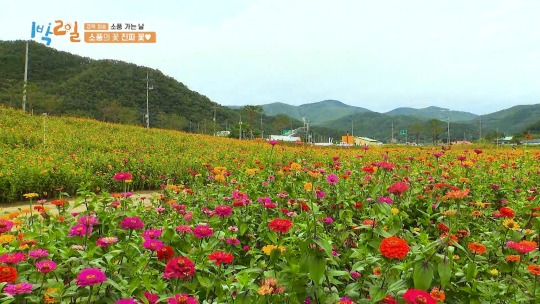
📍Cheongsong Garden, Cheongsong-gun, Gyeongsangbuk-do
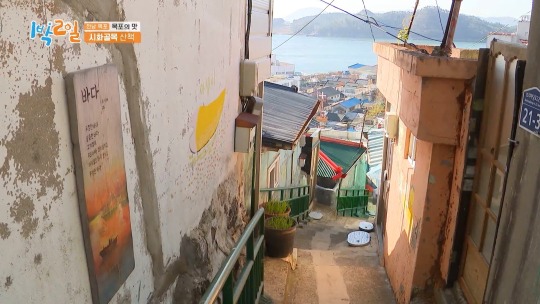
📍Sihwa Alley, Seosan-dong, Mokpo-si
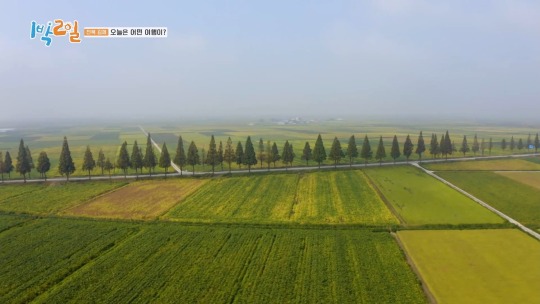
📍Gimje-si, Jeollabuk-do
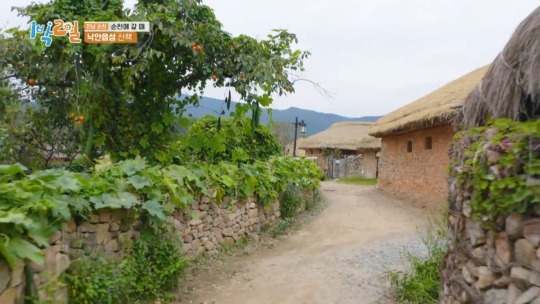
📍Naganeupseong, Suncheon-si

📍Gwanbangjerim, Damyang-gun, Jeollanam-do
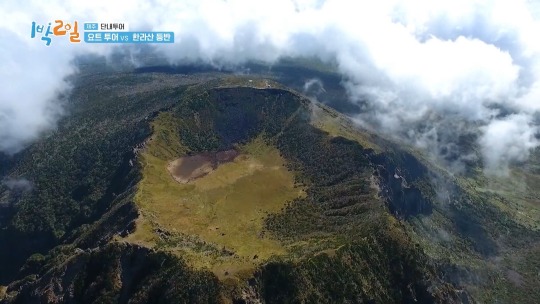
📍Baengnokdam Crater Lake, Mount Halla (Halla-san), Jeju-do
2D1N + Locations (6/?)
10 notes
·
View notes
Text

CHARACTER UPDATE ♥ K-PROFILE
“learn all about Park Jaekyung-”
NAME : Park Jaekyung
KNOWN AS: Kyungchi, Jae
BIRTHDAY: 29th November 2002
BIRTHPLACE: Geochang-gun, Jeollabuk-do, South Korea
BLOOD TYPE: B
ZODIAC SIGN: Sagittarius
FAVORITE MOTTO: Just Keep Swimming - Dori from Finding Nemo
RANDOM FACTS - loves spicy food and can handle it really well - her record of binge watching is 34 hours - her motivation behind training whistle notes is her admiration for ariana grande - she's a huge fan of kang wohee, which is why she came to lgc - jaekyung is very vigilant about living sustainable - her guilty pleasure is gummy worms
YEAR END GOALS - debut - get at least one more modeling endorsement - guest in a variety show
PREVIOUS APPEARANCES/PROJECTS • LGC SAVES THE PLANET ( Vlive ) • LGC Family Concert 2k22 • FUTURE DREAMS S5 • Dungeon Noob Discussions ( Podcast Host ) • PeriPera Group CF • FUTURE DREAMS S6 • LOVE MONTH 2k23 • LGC Family Concert 2k23 • LGC CHARMS JAPAN ( variety ) • LGC Girls Japan 'Fire Truck' tour • Legacy Hall Battle ( variety guest ) • PASSION5 Group CF
MOST MEMORABLE OR FAVORITE EVENT - Jaekyung favourite event by far has to be the tour with LGC Girls Japan. Getting to not only stand on stage but also interact with fans and perform their own unique songs was an experience that she'll never forget and which made her hungry to debut in a permanent group.
4 notes
·
View notes
Text
choi soobin, bisexual, man + he/him ― hey look, it’s lee mingyu! they’re twenty-two years old, they’ve lived in shrike heights for four years, and they’re currently working at starstrike in shrike mall, along with the blue sparrow in town. i heard they’re pretty reckless, but i think they’re so resourceful at the same time. can they make it out alive?

alright, so this is mingyu and this will be a basic overview until i figure out his full backstory. (when I'm not on mobile)
☆ very no(i)sy (both apply) ☆ loves to take risks just for the hell of it (that's how he ended up in Shrike Heights) ☆ definitely a thrillseeker, who doesn't want to feel restricted and gets encouraged by the words "maybe you shouldn't" ☆ big people person, big extrovert, miserable when alone ☆ wants to try everything at least once ☆ secret big teddy bear
yknow what i'm just gonna do this (tba filled out soon™️)
BASIC INFORMATION
Full Name: Lee Mingyu (이민규) Nickname(s): Gyu, tba Age: 22 Date of Birth: December 9th 1967 Zodiac sign: Sagittarius Hometown: Iksan, Jeollabuk-do, South Korea Current Location: Shrike Heights, Colorado, USA Ethnicity: South Korean Nationality: South Korean/American Gender: male Pronouns: he/him Orientation: bisexual Relationship Status: single Religion: none Occupation: employee at Starstrike + barista at The Blue Sparrow Living Arrangements: sharing an apartment with Ho Duk-soo Pets: a hedgehog named Miso (미소) Language(s) Spoken: Korean, English Accent: Slight accent in English
PHYSICAL APPEARANCE
Face Claim: Choi Soobin Hair Color: black (currently blond, has been many different colors) Eye Color: hazel Height: 6'1 (1.85m) Build: muscular Tattoos: none yet Piercings: both ears Clothing Style: casual, overalls, printed t-shirts, bright colors Usual Expression: click Distinguishing Characteristics: dimple smile, heart shaped lips, full cheeks, doe eyes, rounded nose
PERSONALITY
Positive Traits: cheerful, social, intuitive, easygoing, brave Negative Traits: stubborn in specific situations, reckless, oblivious, nosy, loud Goals/Desires: seeing the world and trying everything once Fears: being alone, being limited, chickens and most other birds Hobbies: learning new things, meeting new people, avoiding responsibilities Habits: laughing at inappropriate times, talking too much, sticking his nose in other people's business, scrunching up his nose
FAVORITES:
Weather: sunny/summer Color: yellow, orange Music: pop Movies: My Neighbor Totoro, The Aristocats Beverage: ginseng tea, coke Food: gimbap, churros Animal: dogs, rabbits, hedgehogs
11 notes
·
View notes
Text



korean drama [mr.sunshine]
Location - Jeollabuk-do seodo station
6 notes
·
View notes
Text
Jeonju Jeil High School announced on the 26th that it distributed scholarships
of 39.75 million won donated by Lee Woo-bok (73), CEO of the Kim Je-Annesville Golf Club다파벳우회주소 in Jeollabuk-do, to all 265 third-year students who completed the College Scholastic Ability Test, 150,000 won each.
CEO Lee reportedly added about 2 million won to prepare a special lecture invited by Professor Cho Beop-jong 해외배팅사이트순위of Wooseok University on the theme of "The Special History of Jeonbuk Special Self-Governing Province in Korean History."
Lee graduated from the school in 1979.
At the scholarship donation ceremony held on the 25th, CEO Lee said, "I hope that young people in this land will live with the right view of history and think메이저사이트 about the country and people."
Previously, he took measures to completely ban Japanese vehicles from entering the Annesville golf course at the end of 2021.
0 notes
Text

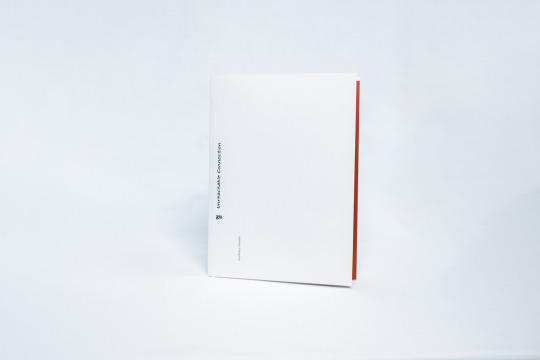

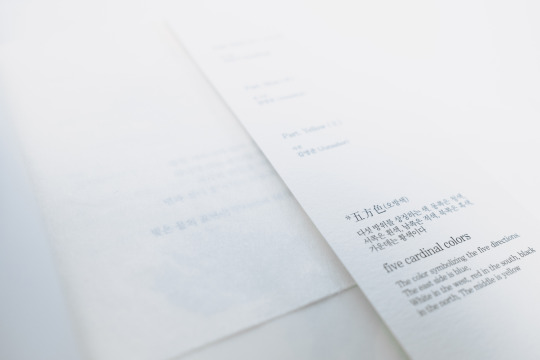


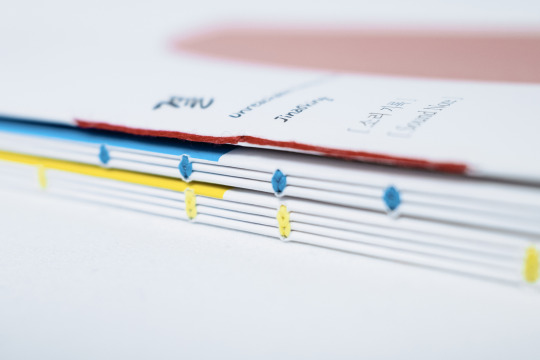
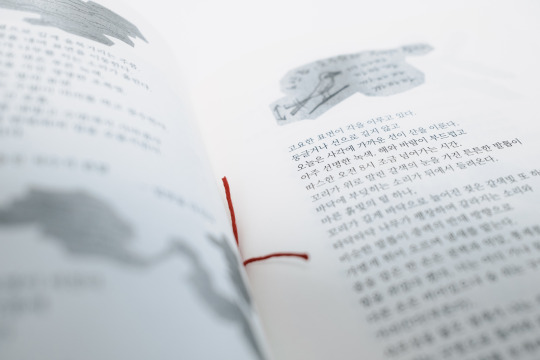


<결 Unreachable Connection>
이 책은 2024년 완주문화재단의 ‘예술인 한 달 살기’ 프로그램에 참여하여 전라북도 완주군 용진읍 두억(행복드림) 마을에서 약 50일 잠깐 머물며 함께 살아가는 자연과 인간의 모습을 담은 다큐멘터리 사진 에세이입니다.
책 시작 본문에서 “용진 저수지의 물이 산과 완벽히 하나가 되는 순간을 만난 우리는 서로의 관찰을 시작했고, 면과 선이 합쳐지는 모습을 지켜보고 있다. … 빛은 물의 표면에 반사되어 내 몸을 그대로 관통한다.”
작가 김영준은 마을 안에 위치한 용진 저수지의 시시각각 변화하는 경이로운 순간을 매일 관찰하며 빛이 투과하는 오브제를 이용해 담아내며 동시에 마을 어르신들로 구성된 지게놀이단의 움직임을 포착하며 자연과 인간의 연결되는 ‘결’의 순간을 사진으로 이야기하고, 작가 김진아는 우리가 살아가는 모습은 무엇인가 고민하며 용진 저수지의 물 주름과 산 길 그리고 자연과 살아가는 사람의 이야기를 피부로 느끼며 그 소리를 글과 그림으로 스케치하였다.
책은 총 세 단락으로 구성되어 있다. ‘Part. Red (불) : 소리 기록’은 작가 김진아의 글과 그림이 수록된 부분으로 책의 전체 컨셉인 오방색의 붉은 기운을 담으며 거의 매일 기록한 산이 들려주는 살아가는 이야기를 그대로 옮겨 적었고 그 기간 동안 작곡한 노래 한 곡이 제일 마지막 장에 실려있다. ‘Part. Blue (나무)’는 작가 김영준의 글과 함께 용진 저수지의 시간을 사진으로 담으며 그 모습은 하늘로 던져지는 오브제에서 두억 마을 지게놀이단의 선과 연결된다. 그 선의 결은 ‘Part. Yellow (흙)’로 이어지며 지게놀이단의 인물과 활동 모습을 있는 그대로 기록하며 우리는 시간의 결을 다시 바라본다. 책의 제일 마지막에는 지게놀이단 인터뷰 영상(QR Code)도 실려있다.
154 페이지 / 148 x 210 mm / 한국어,영어 / 내지 : 인스퍼 M 러프(EW) 100g ,표지 : 와일드 150g
*이 책은 제본, 재단을 직접 수작업(Handmade)으로 만들었다.
@wfac3955@stay_wanju
*두억마을 지게놀이단 어르신들과 사무장님@banjul_prana ,상은 매니져님에게 특별한 감사를 드립니다.
*Special Thanks to Jigenolidan with banjul and PM sangeun .
-
This book will be published in 2024 by participating in the Wanju Cultural Foundation’s ‘Living an Artist for a Month’ program. A brief stay of about 50 days in Dueok (Happy Dream) Village, Yongjin-eup, Wanju-gun, Jeollabuk-do This is a documentary photo essay depicting nature and humans living together.
From the beginning of the book “We encountered the moment when the water of Yongjin Reservoir became completely one with the mountain. We started observing each other, I am watching the planes and lines come together. … “The light reflects off the surface of the water and penetrates my body.”
Artist Kim Young-jun observes the ever-changing wondrous moments of the Yongjin Reservoir located within the village every day and captures them using light-transmitting objects. At the same time, he captures the movements of a lift troupe made up of village elders, creating the 'texture' that connects nature and humans. Telling the story of the moment through photos, writer Kim Jin-ah pondered what it is like to live, felt the wrinkles of water in Yongjin Reservoir, mountain paths, and the stories of people living with nature, and sketched the sounds through writing and drawing.
The book consists of a total of three paragraphs. ‘Part. 'Red (Fire): Sound Record' is a section containing author Kim Jina's writings and drawings, and contains the red energy of the five colors, which is the overall concept of the book. It also contains the stories of life told by the mountains recorded almost every day, as well as a song composed during that period. The song is included on the last page. ‘Part. ‘Blue (tree)’ is a photograph of the time at Yongjin Reservoir along with a text by author Kim Young-jun, and the image is connected to the lines of the Jigeok troupe of Dueok Village in the object thrown into the sky. The texture of the line is ‘Part. Yellow Continuing with ‘(Soil)’, we look again at the texture of time by recording the characters and activities of the Jige Play Troupe as they are. At the end of the book, there is also a video (QR Code) of an interview with the Jiggye Play Team.
154 Pages / 148 x 210 / Korean, English / In : Insper M Rough (EW) 100g ,Cover : Wild 150g
All Handmade Binding
0 notes
Text

byeonsan-myeon, buan-gun, jeollabuk-do, south korea
by lina y.
2 notes
·
View notes
Text
Iksan

Iksan (bahasa Korea: 익산; Pengucapan Korea: [ik̚.s͈an]) adalah kota dan persimpangan kereta api utama di Provinsi Jeolla Utara, (biasanya ditransliterasikan sebagai Jeollabuk-do atau Chollabuk-do) Korea Selatan.
0 notes
Text
The History of Korean Male Soloists from the 20th Century: Episode 3.5/?
This section explores the ongoing journey of Kim Saeng-ryeo, focusing on the orchestras he established and participated in throughout his career. In the first part, I discussed his life and professional achievements.
Kyungsung Welfare Chamber Orchestra
Gyeongseong, which can also be spelled as Kyungsung, refers to the same Welfare Chamber Orchestra.
The Kyungsung Welfare Chamber Orchestra (경성후생실내악단; 京城厚生室內樂團), originally established as the National Music Popularization Corps (국민총력조선연맹; 國民音樂普及挺身隊), aimed to disseminate quality music and its artistic values to the public. This pro-Japanese ensemble was created to support the welfare initiatives of the Government-General of Korea (朝鮮總督府), performing in diverse settings such as educational institutions and various production areas, including agriculture, industry, and fishing, to provide uplifting music to the community.

Members of the Gyeongseong Chamber Orchestra in the 1930s.
This chamber orchestra, established in 1942, comprised musicians who had previously performed with the New Beijing Symphony Orchestra, which originated in Manchuria. At its inception, the orchestra was conducted by Kim Saeng-ryeo, with notable members including Kim Seong-tae, Kim Cheon-ae, Lee In-beom, Kim Tae-yeon (김태연), Lee Yu-seong (이유성), Lee In-hyeong, Park Pyeong-su (박평수), Lee Yong-cheol, Ahn Seong-gyo, and Lee Kang-ryeol (이강렬). Following its reorganization in 1944, Hyeon Je-myeong took on the role of chairman, while Kim Won-bok, Yun Ki-seon, Lee Heung-ryeol (이흥렬), Jeong Hee-seok (정희석), Lee Gyu-yong (이규영), Na Un-yeong (나운영), Jeong Yeong-jae (정영재), Kim Yeong-ae (김영애), and Lee Jong-tae (이종태) continued to contribute as active members.
He performed at the Music Patriotic Concert organized by the Joseon Music Association under the Japanese Government-General. In 1944, he travelled to Manchuria to help integrate the Welfare Chamber Orchestra into the New Symphony Orchestra. As a result, he was listed in the music section of the Dictionary of Pro-Japanese Figures compiled by the Institute for Research in Collaborationist Activities in 2008.
In February 1943, the orchestra, backed by the National Mobilization Association of Korea, organized a national music concert at Bumin Hall (부민관). During its inaugural year, the orchestra conducted a total of 152 performances over eight months, which included 36 general concerts, 46 school concerts, 19 consolation concerts for industrial soldiers, 44 consolation concerts for the military, and 7 additional concerts. In acknowledgment of its contributions, the Gyeongseong Welfare Chamber Orchestra was awarded the 5th Joseon Arts Award (朝鮮藝術賞) by Shin Taiyosha (新太陽社) in Japan in May 1945.

Lee In-beom, Kim Seong-tae, Kim Cheon-ae, and Lee In-hyeong appearing in the advertisement for the Gyeongseong Welfare Chamber Orchestra. 경성후생실내악단의 광고에 나오는 이인범·김성태·김천애·이인형
Activities
The Kyungsung Welfare Chamber Orchestra has a rich history of performances, beginning with its inaugural concert on June 11, 1942, followed by a second concert on December 24 of the same year. The orchestra continued to showcase its talent with a third concert and a Japanese National Music Concert on February 24, 1943, and a solo performance by Kim Cheon-ae in April 1943. Notable events included a patriotic chamber symphony night dedicated to a battleship on June 29-30, 1943, and participation in the Song of the Peninsula Liberation Day Concert on August 3, 1943. The ensemble also organized an open-air music and film night to commemorate the conscription system on the same day. In 1944, the orchestra toured mines and factories in North Hamgyong Province at the invitation of Cheongjin University, followed by concerts aimed at uplifting fishing villages and mining communities in Gangwon-do from August 12 to August 19. The Jeollabuk-do Industrial War Memorial Concert took place from August 22 to August 29, 1944, and the orchestra held its 11th concert from October 2 to 4, 1944. The year concluded with a Grand Concert from January 20 to 22, 1945, and a Hope Concert from March 23 to 25, 1945. The orchestra was honoured with the Joseon Art Award on May 8, 1945, and performed in China from May 5 to May 7, 1945, culminating in an evening of literature and music on August 1, 1945.
The National Music Popularization Corps/ Total Mobilization Federation
A pro-Japanese organization identified "When We Go to the Sea," "Battleship March," "The Power of Asia," and "National March Song" as key selections for the National Song Collection, promoting their performance across various regions. They established a singing guidance team known as the National Song Singing Movement Volunteer Corps, which was mandated to tour and perform these songs. The National Mobilization League, influenced by Western-oriented figures such as Hyun Je-myeong, Kim Seong-tae, Go Jong-ik (고종익), and Lee Heung-ryeol, played a significant role in advancing the Japanese name change policy implemented by the Government-General of Korea. This pro-Japanese entity was ultimately dissolved in July 1945, merging into the Korean National Volunteer Corps.

1977 Broadcast 50th Anniversary Commemorative Performance. In 1927, Gyeongseong Broadcasting Station was established and began radio broadcasting. This is generally considered to be the origin of broadcasting in Korea. This is a photo of the 50th anniversary commemorative performance in 1977.
Chosun Symphony Orchestra (조선교향악단; 朝鮮交響樂團)
The orchestra was established in 1940 through the reorganization of members from the Gyeongseong Orchestra and the Gyeongseong Broadcasting Orchestra. Directed by Park Gyeong-ho (박경호), it held its first concert in 1940 at Bumin Hall, featuring works such as Schubert's "Unfinished Symphony" and Beethoven's "Egmont Overture." Additionally, it premiered the dance drama "Heungbu and Nolbu," composed and conducted by Kim Seong-tae, which marked a significant development in dramatic music inspired by folklore. Shortly thereafter, the orchestra presented Kim Seong-tae's original work "Heungbu and Nolbu" under his direction, engaging in ambitious performances. However, the onset of the Pacific War ultimately led to the disbandment of the Joseon Symphony Orchestra.
People who led the Western music of Gyeongseong Broadcasting Station

In the photo is says Hong Jae-yu (Left) and Park Kyung-ho (Right). Below it says Gyeongseong Broadcasting Station (In Red) and Central Musicians Association 1927 (In Blue).
Kim Saeng-ryeo (김생려), along with Hong Nan-pa (홍난파) and Park Gyeong-ho (박경호), played a pivotal role in introducing Western music to Korea during the Japanese occupation and in the subsequent periods, including the Korean War. These three individuals endured one of the most challenging eras in Korean history, and despite facing censorship, destruction, and loss of their works, their legacy endures. Kim Saeng-ryeo was the last to continue his musical career until his death in 1995. Although their contributions are not widely recognized, many Koreans today continue to honour their achievements, particularly through performances of orchestral works created by them, highlighting the significant impact these artists had on the cultural landscape during a tumultuous time.
The inaugural broadcasting station in Korea commenced operations on February 16, 1927, following preliminary test broadcasts initiated in December 1924 by the Governor-General and the Chosun Ilbo. These early broadcasts included a test by Yangak, although detailed records of the Governor-General's broadcasts on the 9th and 10th remain scarce. Notably, Hong Nan-pa participated in the Chosun Ilbo's test broadcasts on the 17th and 18th, with documented evidence and photographs showcasing his violin performance.

The photo says ‘Special broadcast of the launch of the second broadcasting station with the Gyeongseong Broadcasting Station Orchestra and Isu’.
The introduction of Western music to Korea can be traced back to the 1910s, particularly through the efforts of Hong Nan-pa, aligning with a broader cultural exchange during that era. This music, referred to as Gukak or Changga, distinguished itself from children's songs, pop songs, and folk songs, appealing not only to Koreans but also resonating with Japanese audiences, indicating a successful integration of Western musical influences. In 1919, the Gyeongseong Music Friends Association was established, marking the inception of an orchestra. By 1926, prior to the country's opening, the Central Music Association was formed, which performed a celebratory piece for the inauguration of the Gyeongseong Broadcasting Station. During this period, Hong Nan-pa was studying in Japan, while key figures such as Park Kyung-ho and Mrs. Boots from Ewha Woman’s University (이화여자대학교; 梨花女子大學校) played significant roles. The Central Music Association was comprised of approximately 15 members, including notable musicians like Kim Hyeong-jun and Choi Ho-young, who contributed to its leadership. Mrs. Booth, a graduate of the Pittsburgh Conservatory of Music, was proficient in multiple instruments and significantly advanced the local music scene.

The trombone on the left was Park Geon-won (박건원), and the trombone on the right was Baek Byeong-gon (백병곤). The photo above is a performance scene taken when the group was first formed and broadcast.
The JODK orchestra made its debut on April 13, 1928, initiating a new era of music broadcasting. This ensemble, which began as an amateur group, was notable for being the first professional orchestra in the region to compensate its members. Among those involved were Park Kyung-ho and Hong Nan-pa, with around 18 musicians participating in performances two to three times monthly. In 1929, after returning from his studies in Japan, Hong Nan-pa witnessed a flourishing Western music environment. He dedicated himself to education at the Central Day-care Centre and revitalized the jazz band, which subsequently engaged in active broadcasting efforts.
The initial volume of Hong Nan-pa's extensive collection of 100 children's songs from the Joseon era was published, coinciding with a surge in music broadcasting activities at Gyeongseong Broadcasting Station. In 1931, Hong Nan-pa travelled to the United States for further studies, yet the foundation of his work remained intact, allowing him to return in 1933. During this period, a second Korean language broadcasting station was established, contributing to a more vibrant musical landscape.

From right to left of name shown in the photo -> Baek Myeong-gon (백명곤), Lee Jil (이질), Lee Byeong-sam (이병삼), Kim Won-tae (김원태), Hong Sae-yu, Hong Nan-pa, Choi Ho-young (최호영), Kim Seong-sun (김성선) and Park Won (박원). Below it says -> ‘1929 Summer JODK Broadcast – Jazz broadcast in Seoul for the first time’ - From Mr. Nayoung Yoon's home page.
A trio of violinists, including Hong Seong-yu (홍성유) and Lee Young-se (이영세), emerged during this era, alongside notable musicians such as violinist Jeon Su-rin and clarinetist Kim Kyo-seong. These artists, along with drummers and other instrumentalists, were not only prominent composers but also integral members of broadcast orchestras and jazz ensembles. The distinction between classical music, popular music, and children's songs was increasingly blurred, reflecting a unique cultural moment where the categorization of music was less significant than the enjoyment it provided.
It is often believed that Hong Nan-pa exclusively performed children's songs and classical music; however, he also released popular songs under various stage names. Actively involved in both broadcasting and academia, he played a significant role in the establishment of the JODK Orchestra at the Gyeongseong Central Broadcasting Station, which was formed on April 13, 1935. This orchestra marked the beginning of extensive musical activities, enhancing the breadth and depth of the station's musical offerings. Notably, in 1985, the Korean music history published by the Korea National University of Arts acknowledged Hong Nan-pa's contributions alongside those of Chae Dong-seon (채동선) and others, highlighting their performances of orchestral works by Im Dong-hyeok and the emergence of creative music in Korea. His composition "The Heart of a Traveler" was particularly significant, as it was made possible through the efforts of this orchestra.

From left to right - > Hong Seong-yu, Lee Young-se and Hong Nan-pa Gyeongseong Broadcasting Station’s 1st performance – August 1933
A photograph capturing contemporary musicians, including Hong Nan-pa, Hong Seong-yu, Kim Won-bok, Hong Jae-yu, Hong Eun-yu, and Park Gyeong-ho, showcases their collaboration with Hyun Jae-myeong and Dokgo Seon at the broadcasting station. Hong Seong-yu and Kim Won-bok, a couple united by their passion for the violin and piano, gained fame as a duo through numerous concerts and activities. After studying in the United States, they adopted their current name in 1929. Hong Nan-pa also served as the first chairman of the Joseon Music Association, established in 1930 while he was a professor at Yeonhui University, and he earned a doctorate in vocal music in 1937.

From top left to bottom right -> Dong Ko-seon (독고선), Hyeon Je-yeong (현제명), Park Kyung-ho (박경호), Hong Eun-yu (홍은유), Hong Jae-yu (홍재유), Kim Won-bok (김원복), Hong Seong-yu (홍성유) and Hong Nan-pa (홍난파). Musicians who attended the Yunim Budda Concert – Na Woon-young’s Hall (홍성유님 부처 연주회에 참석한 온악인 나운영 선생님 홈에서). There is also another translation of this –> ‘At the home of Na Woon-young, a musician who attended Hong Seong-yu's Buddha concert ‘
Although Hong Nan-pa passed away prematurely, his legacy continued to flourish after Korea's liberation. He was instrumental in the founding of the Seoul National University College of Music and remained an influential figure in the music industry until his death in 1970. His connections in broadcasting extended to notable figures such as Chae Seon-yeop, Lee Heung-ryeol, Park Tae-hyun, and Hong Jong-in, further solidifying his role as a pivotal figure in the development of Korean music.

Gyeongseong Broadcasting Station Orchestra and Wang Su-bok (경성방송국 관현악단과 왕수복)
The musical endeavours of Gyeongseong Broadcasting Station were significantly impacted by the outbreak of World War II, coinciding with the death of Hong Nan-pa. Following his passing, Kim Saeng-ryeo, who had been assisting Hong as a conductor, assumed leadership of the Broadcasting Orchestra and appointed Gye Kye-sik as a temporary conductor. However, the arrival of Japanese conductor Eiji Nakagawa led to complications in the conducting process, reflecting the broader turmoil of the war, which rendered the activities of Gyeongseong Broadcasting Station increasingly futile during this tumultuous period.
The legacy of Hong Nan-pa looms large, overshadowing many contemporaries whose contributions remain less recognized, yet numerous individuals forged connections with Gyeongseong Broadcasting Station. Notably, figures such as Park Kyung-ho and Kim Saeng-ryeo played pivotal roles in this narrative. Park Kyung-ho was particularly influential in the station's musical landscape, especially during Hong Nan-pa's absence abroad, and he was instrumental in significant events such as the station's inauguration in 1927 and the celebratory concert for the second broadcast in April 1933, highlighting his central role in the station's history.

From left to right -> No Jeong-pal (노정팔), Park Kyung-ho (박경호), Ahn Ik-tae (안익태), hwa Jae-gyeong (활재경), Choi Chang-bong (최창봉). Park Kyung-ho's VOA days - 1957 – (박경호님 VOA시절 -1957년-)
Following the liberation in 1946, KBS assumed its current programming responsibilities, with Kim Saeng-ryeo serving as the planning manager. In June 1949, he made history as the first individual in broadcasting to undertake a six-month training trip to the United States, subsequently working with the Voice of America during the 1950s. Born in 1912, Kim was a student at Yeonhui College in 1939 under the direction of conductor Hong Nan-pa. After Hong's death in 1941, Kim took over the leadership of the Broadcasting Symphony Orchestra at Gyeongseong Broadcasting Station and continued to oversee the KBS Orchestra until after the liberation.

From left to right -> Lee Gye-won (이계원) and Park Kyung-ho (박경호). Park Kyung-ho's VOA days - 1957 – (박경호님 VOA시절 -1957년-)
Kim Saeng-ryeo's Memoir (from the 1977 edition of Korean Broadcasting System)
In the spring of 1939, during the JODK period, he assumed the position of conductor for the broadcasting orchestra, which initially comprised around ten members. Hong Nan-pa, previously known for his accompaniment work, was appointed as the music director of JODK. Following his appointment, he initiated an expansion of the orchestra by acquiring instruments from Japan, which led to an increase in membership to twenty-five. This development culminated in the live broadcast of the Haydn Mozart Symphony, marking a significant milestone as it was also transmitted to Korea.
The formal establishment of the professional orchestra is recognized as occurring on May 16, 1940, under the direction of Hong Nan-pa. The orchestra's repertoire included notable works such as "Spanish Night" by Bizet, "Humoresque" by Dvorak, "Golden Wedding Anniversary" by Marie, "Little Toy Soldier" by Rosey, "Dancing Doll" by Poldini, and "Objects of the Desert" by Zamenik.

Kim Saeng-ryeo (김생려)
Shortly thereafter, Mr. Hong Nan-pa fell ill, prompting my engagement as a contractor in 1944. I assumed Mr. Nan-pa's responsibilities and transitioned into a permanent role. Following his passing, I was appointed as a temporary conductor and subsequently became a full-time member of the broadcasting station. Additionally, we expanded our team by recruiting approximately 20 new members and sought opportunities for external performances, culminating in a 40-member orchestra supported by a budget for 25 full-time positions, which proved advantageous for JODK.
At that time, Onoda, a Japanese individual leading the business department, had studied conducting in Vienna under Eiji Nakagawa and was invited to serve as the chief conductor around 1942. Although we held high hopes for his leadership, our initial rehearsal left us disheartened. Nevertheless, around 40 musicians rallied behind Mr. Gye Jeong-sik, who endeavored to facilitate international performances. However, Onoda's nationalistic tendencies hindered these efforts, as he was reluctant to engage in public appearances, possibly due to personal sentiments.
Negotiations with Onoda occurred multiple times, with around 20 unpaid members participating in broadcasts under Eiji Nakagawa's direction. Despite his willingness to continue, he insisted that external performances be managed by an accountant, a request that was consistently denied. This marked the initial attempt to cultivate the Korean orchestra movement, which was initiated by a Japanese individual named Han, yet it faced inevitable challenges due to prevailing prejudices.

Double Broadcast Commemorative Performance - Sogong-dong Gyeongseong Public Hall - (2중방송 기념 공연 - 소공동 경성공회당-)
Ultimately, with the exception of approximately ten exclusive members, all individuals departed from JODK, leading to his resignation and withdrawal from the organization. The former members who left attempted to unite and establish a new orchestra; however, their efforts were unsuccessful. Consequently, the JODK Orchestra reverted to a ten-member ensemble, transforming into an accompaniment orchestra before ceasing to exist after August 15th, maintaining its current form since 1949.
The Seoul Symphony Orchestra, which served as the precursor to the city orchestra, was situated at the Jeongdong Broadcasting Station during this period. Under the guidance of American advisor Rolf Jacobi, a genuine broadcasting initiative commenced, marking the beginning of the symphonic movement.
The War of National Foundation (Movie)
This section discusses President Syngman Rhee, featured in a 2024 Korean independent film directed by Kim Deok-young. The documentary explores the historical significance of Rhee, the first to third President of the Republic of Korea, highlighting his efforts to rescue classical musicians from abduction by founding the 'Naval Military Music Band.'

Following Korea's liberation from Japanese rule in 1945, the peninsula was divided by the United States and the Soviet Union at the 38th parallel, leading to divergent ideological paths for the North and South. North Korea, influenced by Soviet communism, evolved into a repressive dictatorship that violated human rights and stifled freedom. In contrast, South Korea embraced liberal democracy under American influence. This film examines how two nations, sharing a common language, history, and culture, became polarized into vastly different states, emphasizing Rhee's pivotal role in shaping the Republic of Korea over the past seven decades.
youtube
1st Trailer
youtube
2nd Trailer
Evaluation
The film occupies a unique space between a biographical portrayal and a documentary focused on a historical event, presenting a nuanced interplay of broader societal changes and individual experiences. It diverges from the typical binary of good versus evil often found in Korean political narratives. Given its exploration of political figures and events, it inevitably elicits varied interpretations influenced by viewers' political affiliations, irrespective of the film's artistic merit.
Syngman Rhee, a figure marked by both significant achievements and controversies, has sparked polarized assessments; some argue the film prompts a reassessment of his legacy, while others contend it distorts historical facts. Critics have labelled the film as one that undermines Rhee's contributions, alleging it misrepresents the spirit of the March 1st movement and unduly glorifies pro-Japanese elements associated with the New Right, despite Rhee's clear anti-Japanese stance.
The discourse surrounding the film reveals a spectrum of opinions, from those who find merit in its message to others who deem it overly simplistic and biased, resulting in a stark division in public reception, as evidenced by emotional responses from viewers.
Establishing the 'Naval Military Music Band'
The film 'The War of National Foundation' is said to have exceeded 820,000 viewers by the 22nd, merely three weeks after its February 1, 2024 release. While it is customary to pay tribute to the founding president, discussions regarding President Syngman Rhee among Koreans are just beginning to emerge. However, an important narrative remains untold in the film; few are aware that President Rhee played a significant role in the advancement of high-level classical music, which is now celebrated by Koreans as a 'K-classic'.

This is a photo taken by the Jeonghun Music Band, which was founded during the war, during its Jinhae tour in December 1950. All members are wearing navy uniforms as naval personnel, which is unusual. Courtesy of Jeong Seong-yeop, Executive Director of the Republic of Korea Military Song Commemoration Association.
The outbreak of the Korean War in 1950 led to the fall of Seoul, forcing musicians to flee amidst the turmoil. In this chaotic environment, there was little support for these artists, compelling them to navigate their own paths. Conversely, Kim Il-sung recognized the strategic value of music for propaganda and invited Jeong Yul-seong, a member of the Chinese Communist Party, to North Korea, granting him the rank of Major in the North Korean Army. Jeong Yul-seong subsequently recruited and forcibly abducted musicians who remained in Seoul, resulting in the capture of many, including baritone Professor Kim Hyung-ro, who was married to Professor Kim Soon-ae, the composer of the Korea Military Academy's school song and known for "Because of You."
In response to these developments, conductor Kim Saeng-ryeo of the Seoul Symphony Orchestra and the era's leading soprano, Kim Cheon-ae, proposed the establishment of a military music corps to President Syngman Rhee. Despite resistance from various military branches due to operational priorities, Chief of Naval Operations Son Won-il, who understood the significance of music as his wife was an Ewha Womans University music graduate, successfully advocated for the initiative, leading to the formation of the 'Naval Military Music Corps' on October 1, 1950.

President Syngman Rhee meets with the Children's Press Corps in 1957. Courtesy of the Ministry of Patriots and Veterans Affairs.
A total of 130 musicians, both male and female, resided in the 'Bupyeong Inn', a distinctive three-story building shaped like the letter 'ㅁ' in Bupyeong-dong, Busan. This group was responsible for operating a symphony orchestra, a choir, and a creative department. Notable figures among them included composers such as Kim Dong-jin, Kim Seong-tae, Na Woon-young, and Yoon Yong-ha, along with conductors Kim Saeng-ryeo and Lim Won-sik. The ensemble also featured prominent musicians like violinist Ahn Byeong-so, cellist Jeon Bong-cho, pianist Baek Nak-ho, and vocalists Kim Cheon-ae, Lee In-beom, Kim Hye-ran, Hwang Byeong-deok, Oh Hyeon-myeong, and Ahn Hyeong-il. Their performances provided comfort and morale-boosting support to both troops and civilians.
Many of the musicians rescued from potential abduction by North Korean forces under President Rhee Syng-man have become foundational figures in the classical music scene of Korea, contributing to its rich heritage. This location was also the birthplace of Korea's first mixed professional choir. In 1957, the 'Navy Symphony Orchestra' rebranded itself as the Seoul City Symphony Orchestra, continuing its tradition as a leading musical institution. Additionally, it launched 'Jeonghun Music', Korea's inaugural music magazine. Following the recapture of Seoul on November 11, 1950, the 'Jeonghun Music Band' commemorated the Navy's fifth anniversary with a series of six concerts over three days at the 'Sigongwan' in Myeongdong, aimed at uplifting the spirits of UN forces and local citizens affected by the war.
The upcoming year will mark the 80th anniversary of the Republic of Korea Navy, established on November 11, 1945. This milestone raises the question of whether there will be a celebratory performance to honour the Navy's role in founding the Seoul City Symphony Orchestra. The unprecedented policy of safeguarding musicians during wartime is a significant aspect of history, and it serves as a reminder of President Rhee Syng-man's contributions to the arts and culture during a tumultuous period.
#south korea#history#korea#Korean Music#Korean Music History#Music History#Kim Saeng-ryeo#김생려#photography#korean history#Youtube
3 notes
·
View notes
Text
Quelle est la ville élue la meilleure pour vivre en Corée ?
Chaque année, la Corée mène une enquête pour déterminer les villes les plus agréables à vivre ou les plus durables. Cette année encore, <Sejong> a été élue meilleure ville. L’enquête a porté sur 228 villes, et celles arrivées en tête sont les suivantes : Sejong 1. Sejong 2. Suwon, Gyeonggi-do 3. Namwon, Jeollabuk-do 4. Yuseong-gu, Daejeon 5. Songpa-gu, Séoul Ces résultats sont basés sur…

View On WordPress
0 notes